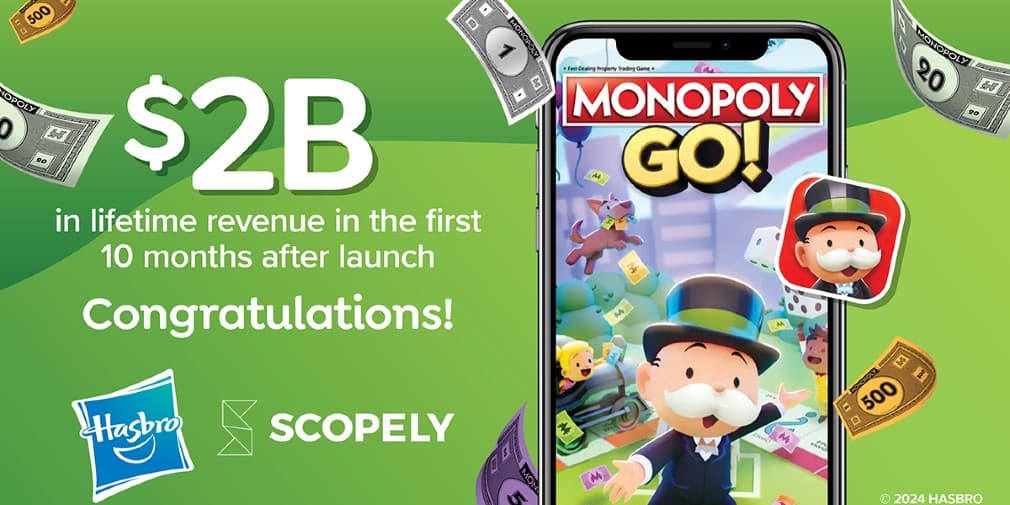
- Monopoly Go has raked in an enormous $2bn in revenue in just under 10 months
- The Scopely-developed game is an adaptation of Hasbro’s classic board game
- What’s made it so popular? Well, accessibility, variation and more
Monopoly Go, Scopely’s handheld adaptation of the classic board game, has raked in over $2bn in revenue in just under 10 months. It’s a pretty major milestone, especially given that mobile games are often noted to be huge successes if they only pass $1bn. So what’s making Monopoly Go so popular?
Monopoly was first released in the 1930s and was ironically based on an earlier anti-monopolist version of the game. It’s a simple board game that requires you to roll dice, move around and collect rent on various properties you build on any given space. Monopoly is also one of the world’s most popular board games with dozens of variations, themed editions and yes, video games.
Making a monopoly
As for why Monopoly Go is so popular? Well, it’s hard to say because there’s a bunch of reasons. But we think first and foremost is the wide availability. Now, it goes without saying that in-app purchases and other mobile game spending don’t have a great reputation. But when you consider that a regular, physical edition of Monopoly can run you anywhere from $15 to more than $30 for some of the bigger versions, suddenly that money may seem like small potatoes.
Then you consider the fact that, rather than dragging all your friends around your house – or your family for that matter – to play it, you can simply go online and play it with them via smartphone. That and rather than having to figure out how to understand the various rules, you get it worked out for you digitally, and it makes it a much more accessible and arguably simpler version of the classic board game.
Regardless, you likely haven’t seen anywhere near the last of Monopoly Go. Maybe themed versions are on the cards? Or is Scopely going to get the chance to tackle other Hasbro properties? We’ll have to wait and see.